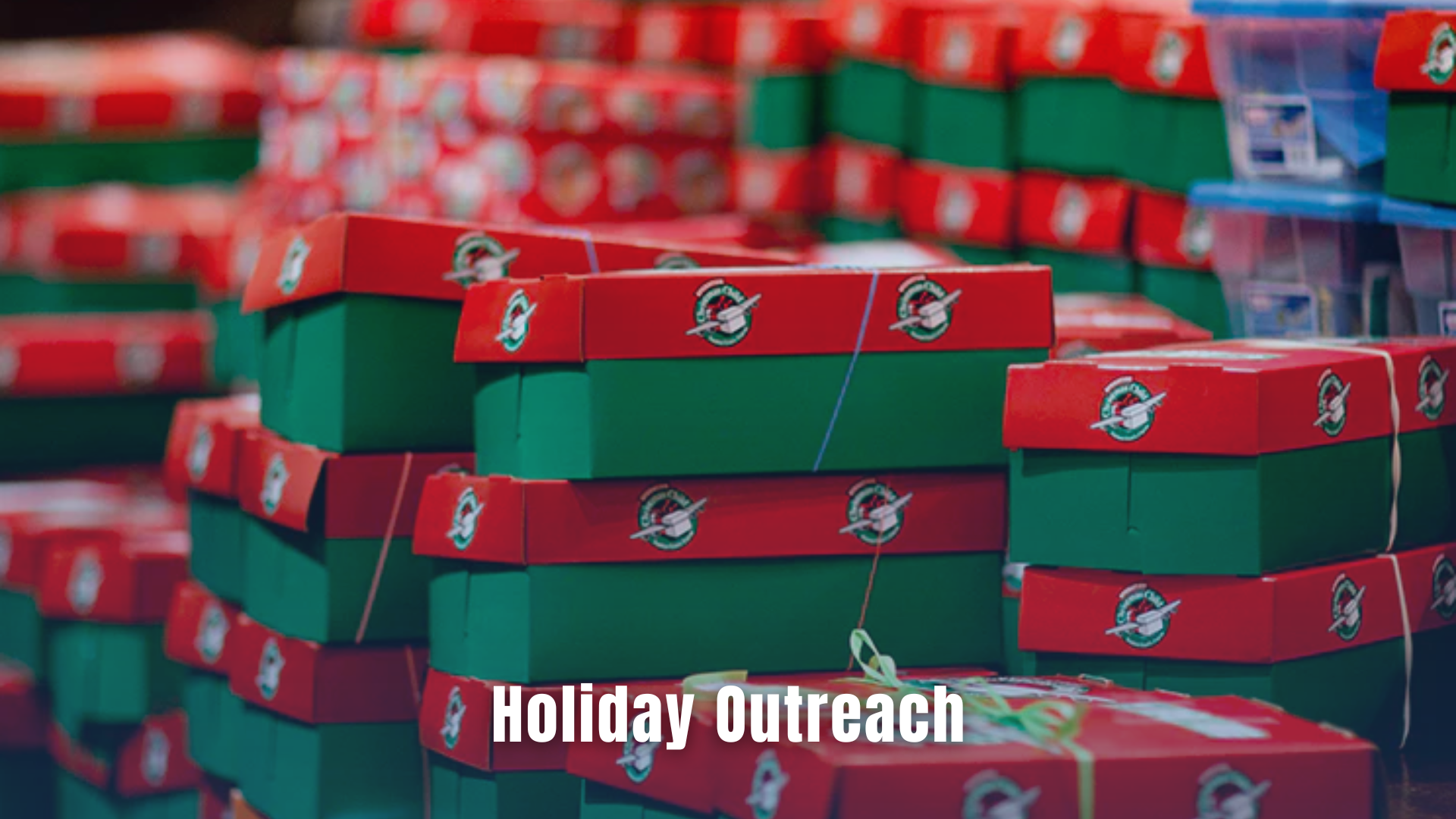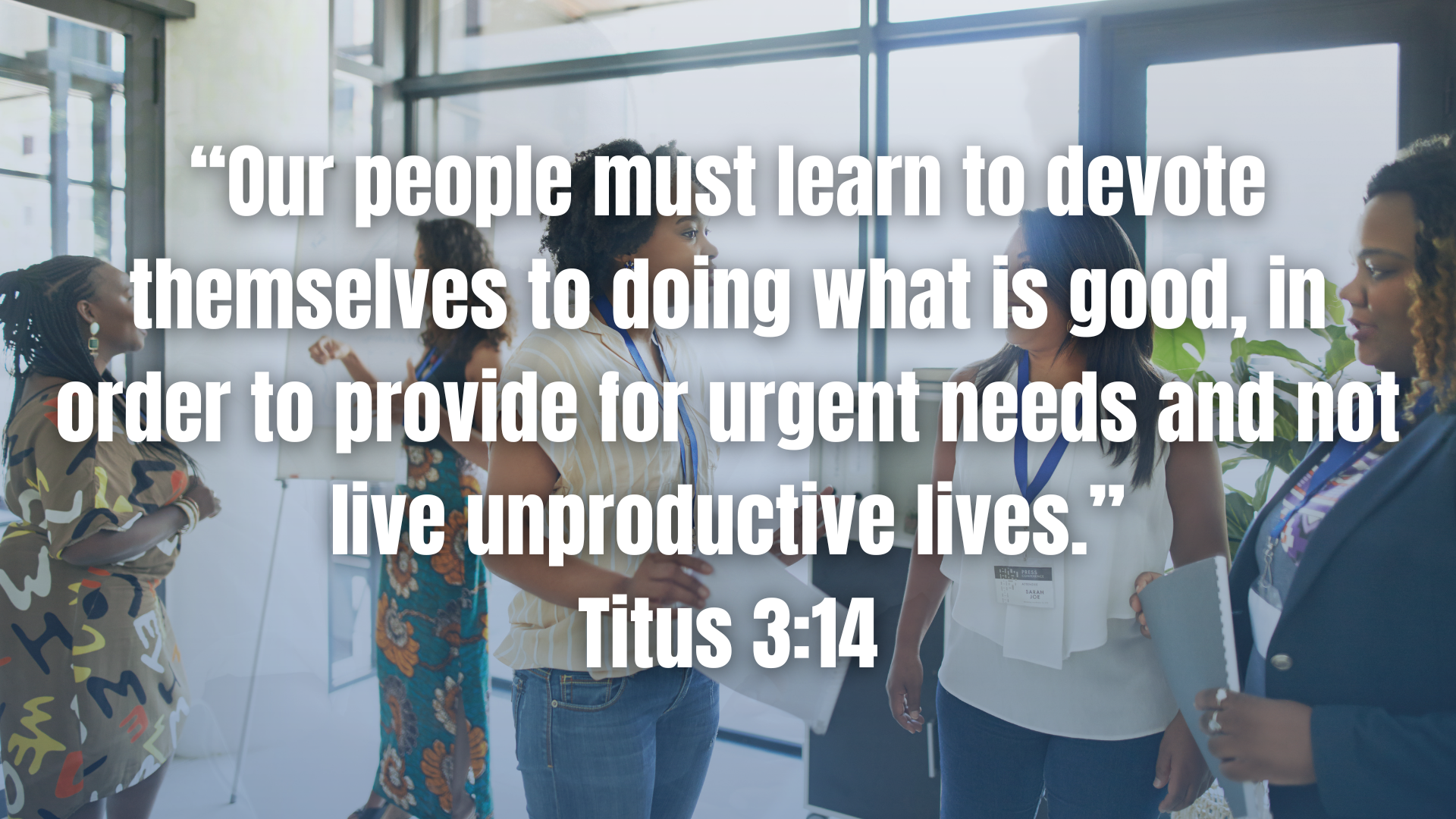Leading Holiday Outreach That Lasts
Having Purposeful Presence
The holiday season is one of the most meaningful yet chaotic times in community outreach. Churches are uniquely positioned to be the hands and feet of Jesus in real, tangible ways during this season. But as I’ve learned through years of coordinating projects like our Heritage Christmas Shoppe, Meal Packing event, and other local partnerships, how we serve matters just as much as what we do.
Without clear planning and intentionality, even the most well-meaning projects can become overwhelming or ineffective. Choosing the right opportunities, partnering wisely, and setting teams up for sustainable success helps us make the most of this sacred season.
The Heart Behind Holiday Outreach
During the holidays, needs become both more visible and more urgent. The weight of poverty is felt most acutely, and isolation can run deep. With gaps in school, shelter, and family resources widening, the Church can stand in the gap with presence, generosity, compassion, and presence—and yes, I mean presence twice.
At Heritage, one of our favorite holiday ministries is the Heritage Christmas Shoppe—a pop-up toy store where parents can shop for their children’s Christmas gifts at deeply discounted prices.
It’s designed intentionally around dignity.
Parents aren’t handed pre-wrapped gifts; they get to choose the toys their children will love. Watching a mom pick out a toy she knows will light up her child’s face is a holy moment—it reflects the joy and agency God designed for every parent.
Every December, when I see that kind of joy—students leading volunteers to pack thousands of meals at our Meal Packing event—I’m reminded that what looks like organization on the surface is really about something deeper: dignity, joy, and the quiet presence of Jesus in ordinary moments.
Examples of High-Impact Outreach
Whether your church is large or small, you can design opportunities that matter to your community. Here are a few ideas that have proven both meaningful and sustainable for us and for others:
Thanksgiving or Christmas Meal Distribution: Partner with schools, housing complexes, or shelters to provide full Thanksgiving meals.
Christmas Gift Programs: Organize an Angel Tree, adopt-a-family drive, or toy shop that empowers parents to choose gifts with dignity. (Our Heritage Christmas Shoppe embodies this—parents “shop” affordably for their children in a festive, hope-filled environment.)
Winter Clothing Drives: Collect coats, gloves, and blankets for families living without heat, distributed through trusted partners.
Meal Packing or Food Relief Projects: Host a Meal Packing event that brings students, families, and volunteers together to assemble thousands of meals in just a few hours turning service into celebration.
Foster Family or First Responder Appreciation: Host simple celebrations or deliver care packages that express gratitude to those often overlooked during the holidays.
Senior Care Outreach: Bring cards, small gifts, or music to senior living facilities where residents may feel forgotten.
Key Considerations When Planning
No matter how simple or ambitious your projects are, thoughtful design matters. Ask the right questions early:
❖ What needs are greatest in our community right now?
Don’t assume; ask your partners. Schools, food pantries, and shelters often see needs before anyone else. Listening first ensures you’re meeting real needs, not just repeating familiar projects.
❖ What aligns with our church’s mission?
Choose opportunities that strengthen your long-term outreach vision. If your mission is to walk with families year-round, use December as an open door to deeper relationships in the months ahead.
❖ What else is happening in the church calendar?
Coordinate across departments to avoid volunteer burnout or schedule conflicts. Collaboration often creates synergy that elevates every ministry.
❖ What’s realistic for your volunteers?
Some people have margin; others are maxed out. Offer shorter, family-friendly ways to serve—decorating, sorting toys, hospitality—so everyone can participate meaningfully.
❖ Are roles and expectations clear?
Healthy structure drives healthy service. Create an overall planning team to manage big-picture coordination—timelines, communication, and alignment—and assign project-specific leads for each event.
This balance keeps strategy centralized while empowering volunteers to lead with ownership. When people understand their role and why it matters, confidence grows and ministry multiplies.
How to Collaborate Across Ministries
Holiday outreach shouldn’t exist in a silo. Some of our best moments of impact have come when Outreach/Missions partners with other church departments, because when we serve together, the body of Christ moves as one.
At Heritage, I partner closely with Heritage Kids, Heritage Students, and our Campus Pastors to ensure our holiday efforts reflect the full heartbeat of the church, not just one department. Our Meal Packing event, for example, operates through Heritage Students, who lead alongside adult volunteers to serve hundreds of participants. It’s a hands-on, high-energy experience where students learn that serving isn’t an extra program—it’s discipleship in action.
This year, we launched a new family-friendly project with Heritage Kids—a sock collection and caroling day for seniors in care facilities. While designed with children and families in mind, it’s open to all ages and connects our campuses around shared compassion.
Projects like this require collaboration and communication between pastors, departments, and campuses—but they also create shared ownership. When we plan together, celebrate together, and tell the stories together, it’s not just an Outreach win—it’s a church win.
Sustaining Outreach Beyond the Holidays
Holiday outreach should be a doorway, not a destination. The goal isn’t to pull off a good event; it’s to cultivate lasting relationships.
At Heritage, we look to our existing partners first when planning projects. These relationships, built throughout the year, allow us to meet real needs with consistency and respect. For every opportunity, we ask what the next step looks like—whether it’s following up with those we served or continuing to walk with the organizations we partnered alongside. There may not always be direct next steps with participants, but there should always be connection. Otherwise, even well-intentioned ministry risks becoming a parachute moment. After the Christmas Shoppe, we reconnect with partners to explore continued engagement, and many volunteers discover new ways to serve year-round after these events.
As we evaluate, we ask:
Who did we connect with, and how can those relationships grow?
How can we better support our existing partners next year?
What next steps can volunteers take to stay engaged?
Are we serving with people or simply for them?
Does this outreach reflect our mission and build long-term impact?
Asking these kinds of questions keeps every effort connected, relational, and missionally grounded, transforming seasonal generosity into sustained ministry presence.
Reflection and Debriefing
When the lights are packed away and the last cocoa cup is gone, take time to pause and reflect. What worked? What surprised you? What would you change?
After Christmas, I gather both my Advisory Team and the Christmas Outreach Planning Team for a debrief. We celebrate what went well, talk honestly about what didn’t, and listen for themes that reveal where God might be inviting us to grow.
While we value continuity from year to year, we also have no sacred cows. Every project is discussed and assessed annually for both fit and logistics. What worked beautifully one year might not fit the needs or capacity of the next. We don’t change for the sake of change, but we’re also careful not to elevate our own preferences or nostalgia above the people we’re called to serve.
It’s easy in ministry to chase “warm fuzzies”: the emotional payoff of a project that feels good. If we’re not careful, we can start serving ourselves instead of those we’re meant to serve. Our debriefs are how we guard against that drift. By keeping the focus on who we serve and why, we ensure every project remains aligned with our mission, our community, and the heart of Christ.
Final Thoughts
Holiday outreach is sacred work. It’s where planning meets purpose and service becomes worship. When we lead with prayer, humility, and a willingness to learn, our projects do more than meet needs; they embody the hope of Christ in tangible ways.
So plan well, partner wisely, and serve faithfully because the miracle of Christmas doesn’t just happen once a year—it happens every time the Church shows up with love that looks like Jesus.









